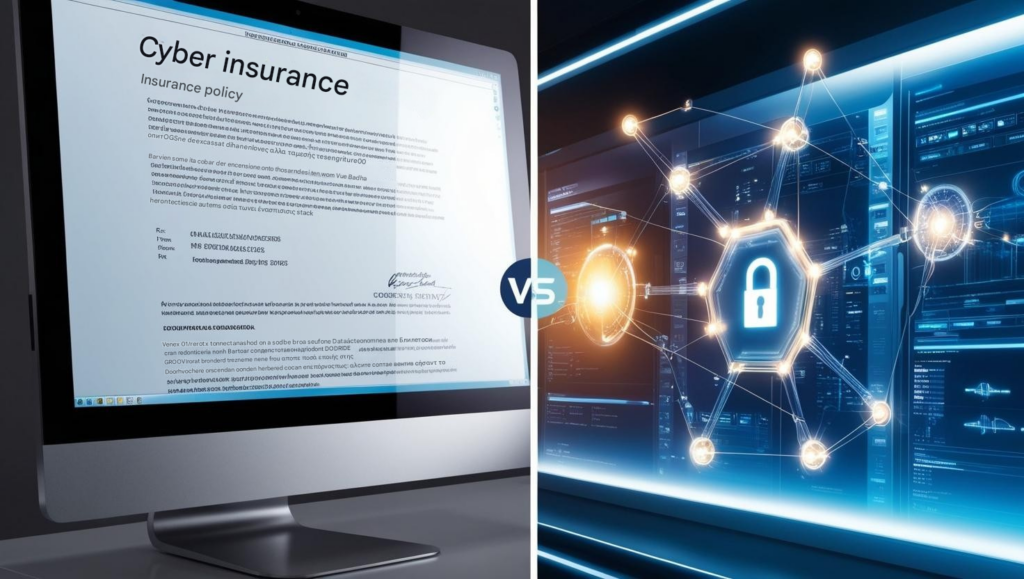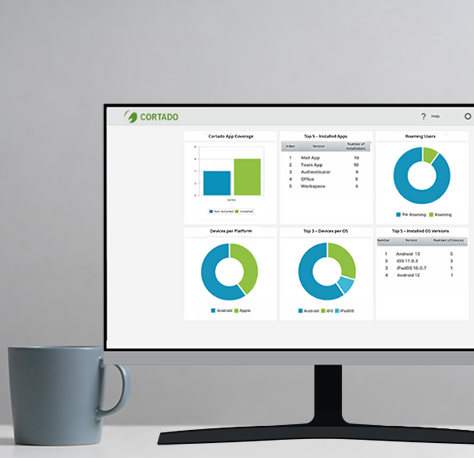A cyber insurance policy can help cover damages when an incident occurs – but what about prevention and data protection? Find out how Mobile Device Management (MDM) proactively minimizes risks and safeguards sensitive data.

Organizations today face the growing challenge of protecting themselves against cyber risks. In addition to technical safeguards, cyber insurance is becoming increasingly important for financial risk mitigation. However, insurance alone does not prevent cyberattacks – a comprehensive security strategy is essential. Often underestimated, yet playing a key role in such strategies, is Mobile Device Management (MDM).
What Is Cyber Insurance?
Cyber insurance is a specialized policy that protects companies from financial losses resulting from cyber incidents. These include:
- Hacker attacks
- Ransomware
- Data theft
- System outages caused by cyberattacks
- Costs for forensic analysis and crisis management
Typical Services Covered by Cyber Insurance
Depending on the provider, a cyber insurance policy may include the following areas:
- Claims Settlement: Covering expenses for business interruptions, data recovery, and system restoration.
- Liability Protection: Covering third-party claims for damages in the event of data protection violations.
- PR and Crisis Management: Providing support for reputation management through PR agencies.
- Legal Protection: Covering costs associated with legal disputes.
Prevention Instead of Claims Settlement: Why MDM Is Indispensable for Cybersecurity
Cyber insurance protects organizations from the financial consequences of cyberattacks, data breaches, and operational disruptions. However, it is no substitute for preventive security measures. Instead, it should be seen as one element of a comprehensive IT security strategy.
In a mobile work environment, smartphones and tablets are often the weakest link in the security chain. This is precisely where Mobile Device Management comes in. An MDM solution enables companies to centrally manage mobile devices, enforce security policies, and close potential security gaps.
Key advantages of integrating MDM into a cybersecurity strategy include:
- Device Protection and Access Control: With MDM, devices can be secured with strict password policies and encryption mechanisms. In addition, companies can ensure that only authorized devices have access to sensitive corporate data.
- Rapid Response to Security Incidents: If a device is lost or stolen, it can be remotely wiped or locked to prevent unauthorized access.
- Protection Against Malware and Phishing: By controlling app installations and restricting usage to trusted applications, MDM reduces the risk of malware or fraudulent apps being installed on company devices.
- Enforcement of Compliance Requirements: Many industries have stringent data protection and security standards. MDM helps organizations implement and document these standards consistently.
Best Practices for Integrating MDM into Your Cybersecurity Strategy
An effective cybersecurity strategy must begin well before insurance coverage kicks in. Cyber insurance is the last link in the chain and should serve only as a safety net for worst-case scenarios.
Businesses should combine technical measures, organizational guidelines, and robust employee awareness. MDM is central to this approach, as it secures and manages mobile devices – one of the largest attack vectors.
To effectively integrate MDM into your security strategy, consider the following best practices:
- Clear Security Policies for Mobile Devices: Organizations should standardize security requirements for all mobile devices. These include guidelines for password usage, encryption, and the handling of corporate data.
- Combine MDM with Other Security Measures: MDM should be integrated with other defense tools such as firewalls, Endpoint Detection & Response (EDR), and zero-trust strategies to create a holistic IT security architecture.
- Regular Reviews of Your MDM Strategy: Security threats evolve constantly. Companies should regularly review and update their MDM policies to address new risks early on.
Read more in our article Cybersecurity in the mobile age: How to protect your business.
Cyberattacks and Insurance Coverage: What to Do in an Emergency?
Even with the best security measures, a cyberattack cannot always be prevented. Therefore, organizations need a clear contingency plan:
- Initiate Immediate Action: Isolate affected systems and identify compromised devices to stop further spread.
- Leverage MDM to Remove Compromised Devices from the Network: An MDM solution can quickly lock or remove compromised devices from the corporate environment to minimize any further damage.
- Submit an Insurance Claim: If any losses occur, they should be reported to the insurance provider without delay. Detailed documentation of the attack will help speed up the claims process.
- Notify Data Protection Authorities: If personal data is involved or a cyberattack leads to a data protection incident, it is required to notify the relevant authorities. Typically, this must be done within 72 hours of discovering the incident to meet data protection regulations such as GDPR and avoid potential fines.
Conclusion: Cyber Insurance and MDM – A Strong Duo for IT Security
While cyber insurance can protect companies from financial harm, the best defense is to prevent cyberattacks in the first place. Data protection and prevention take precedence – by incorporating MDM like Cortado MDM into your security strategy, you actively protect corporate data, prevent security incidents, and strengthen your overall IT security architecture. Additionally, using MDM can help secure better insurance terms and possibly lower premiums – an added incentive for bolstering IT security.

Enjoy the Ease of Mobile Device Management
With Cortado MDM, you’re ready to go right away and can manage mobile devices easily and securely.